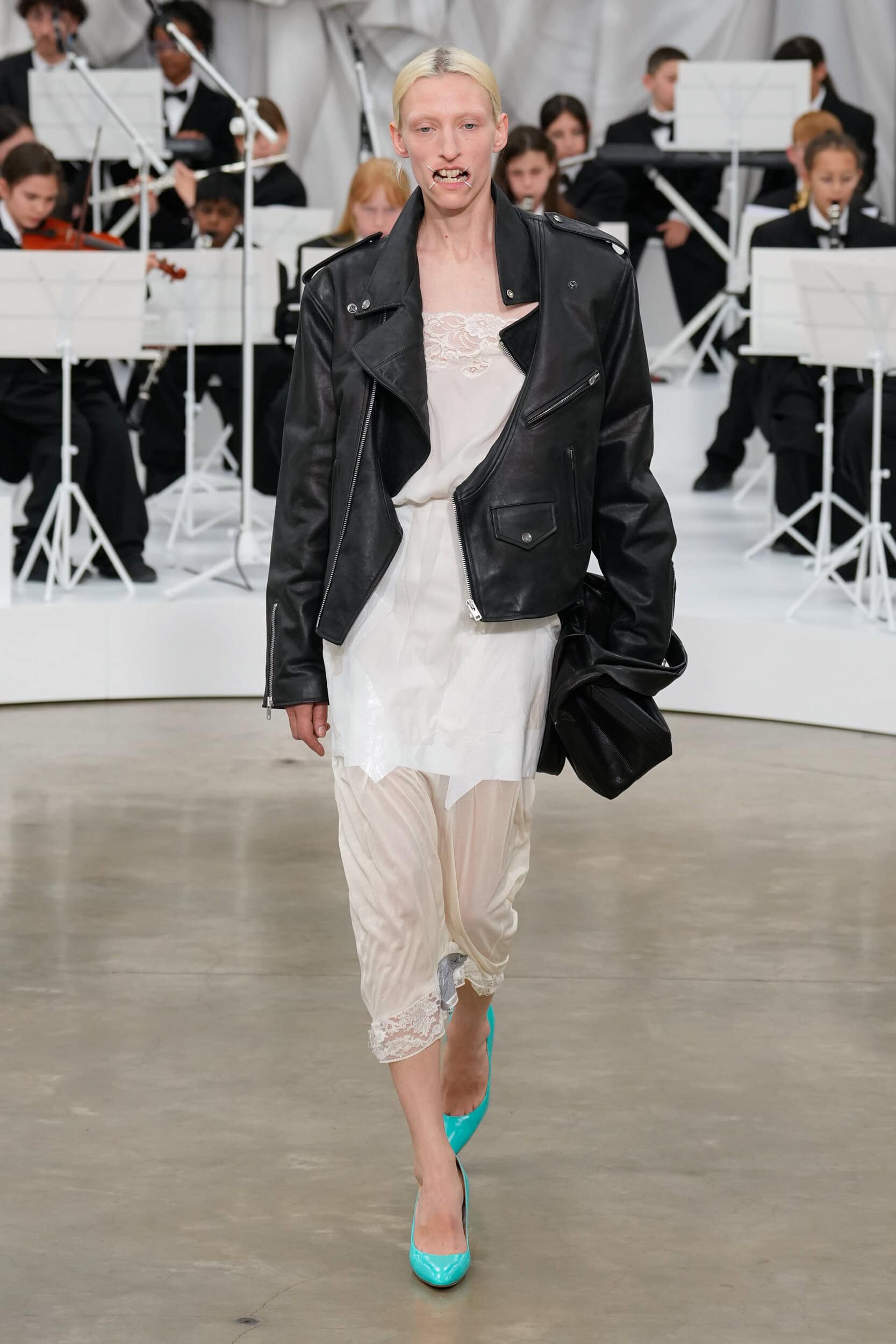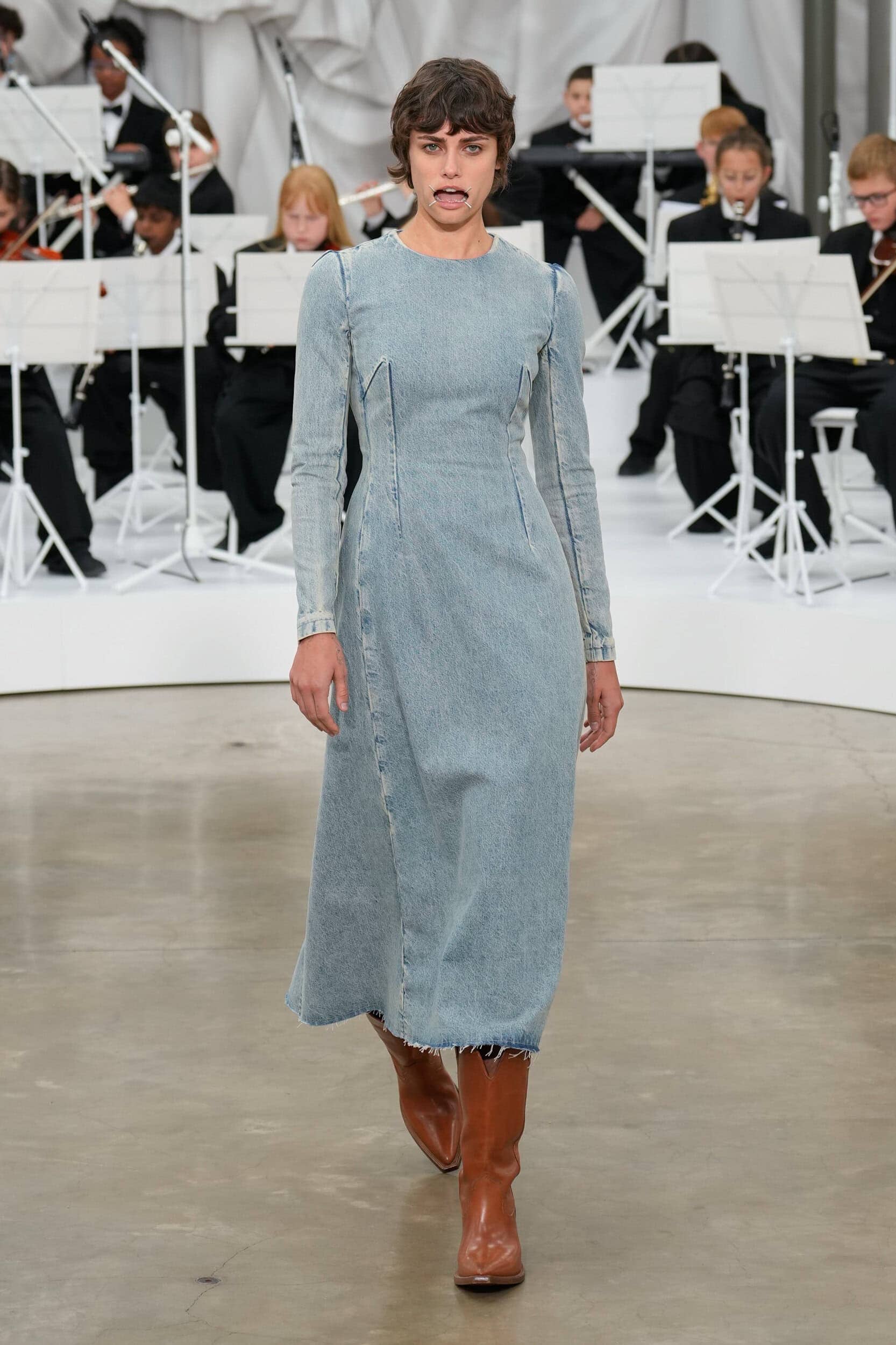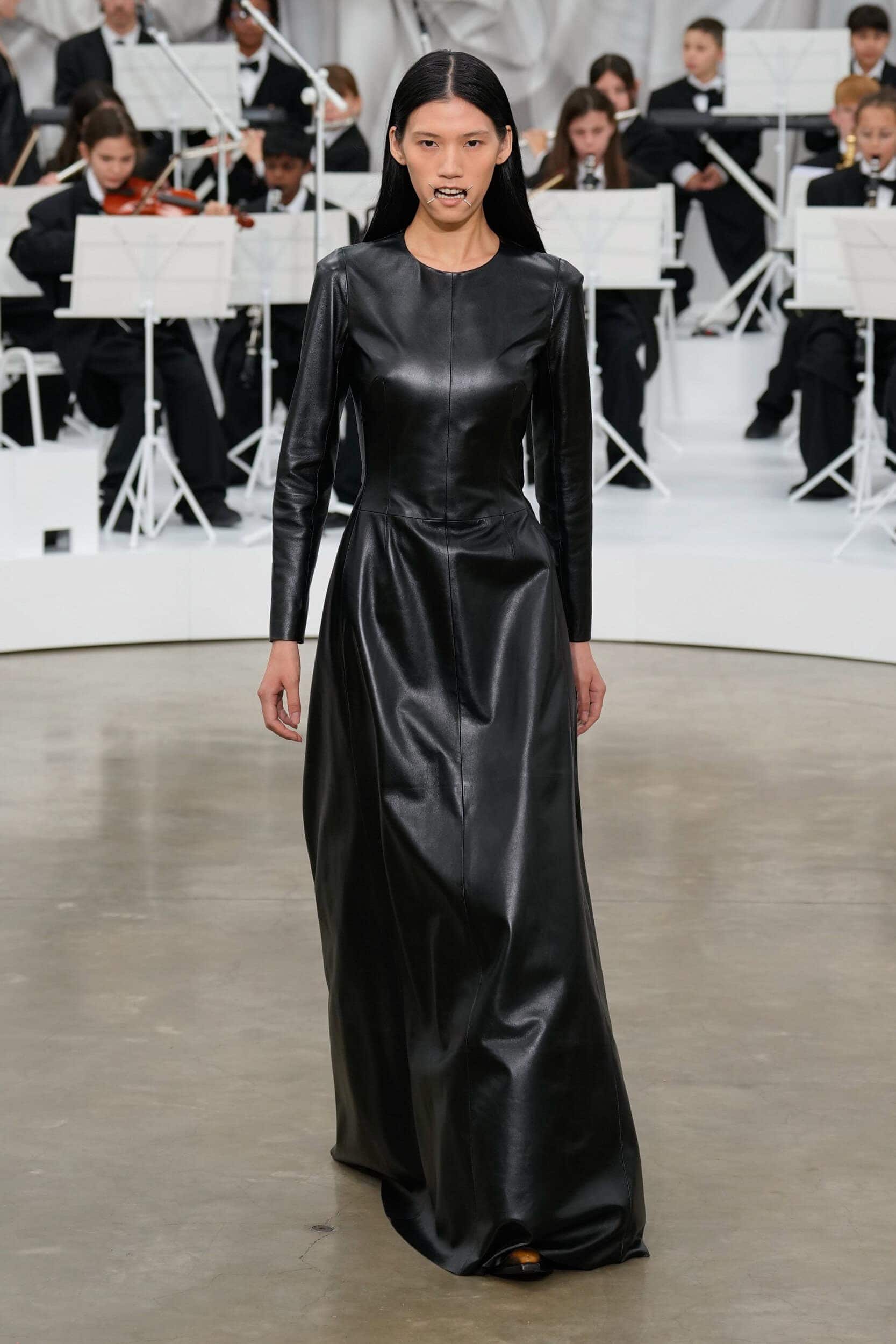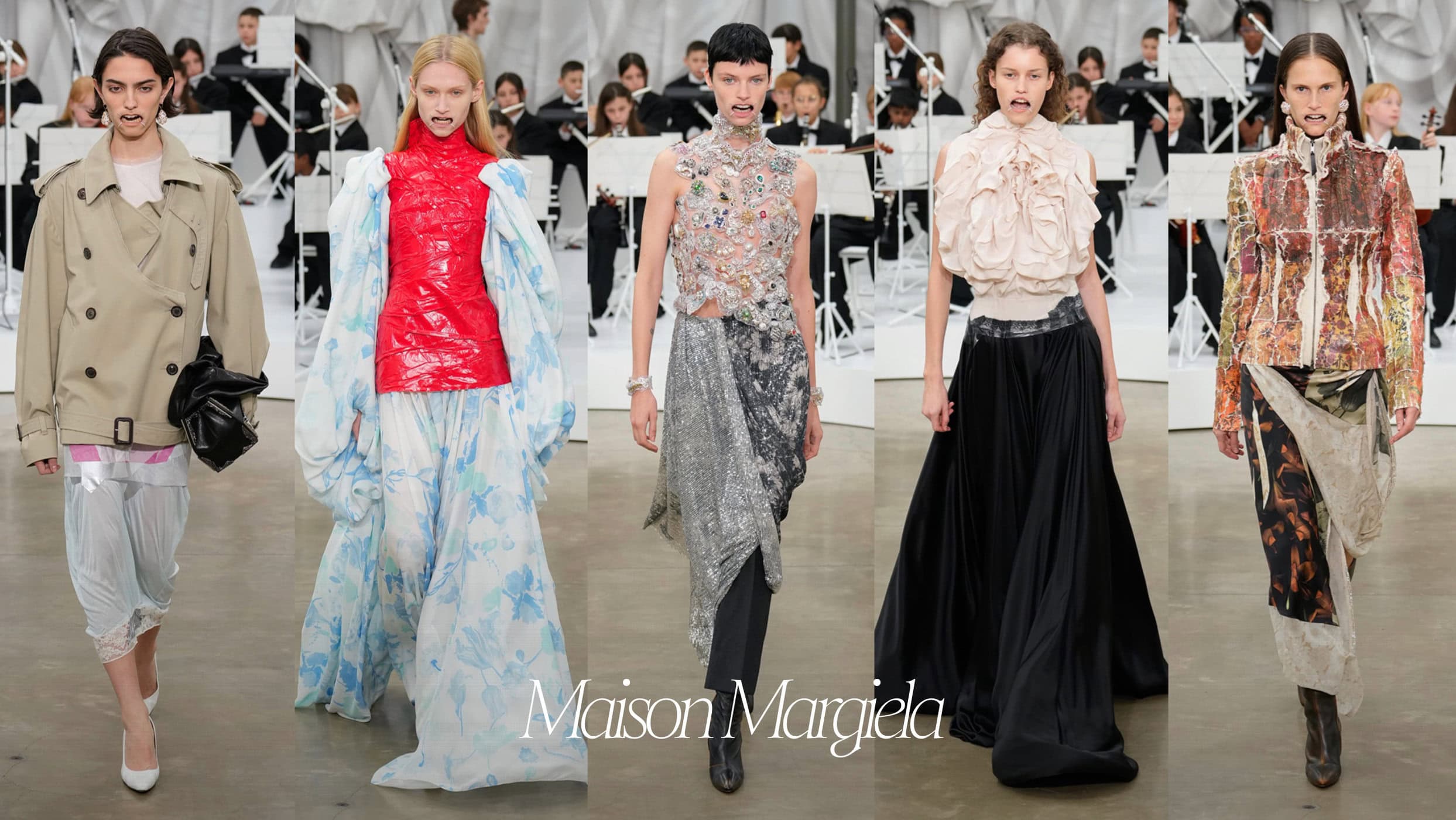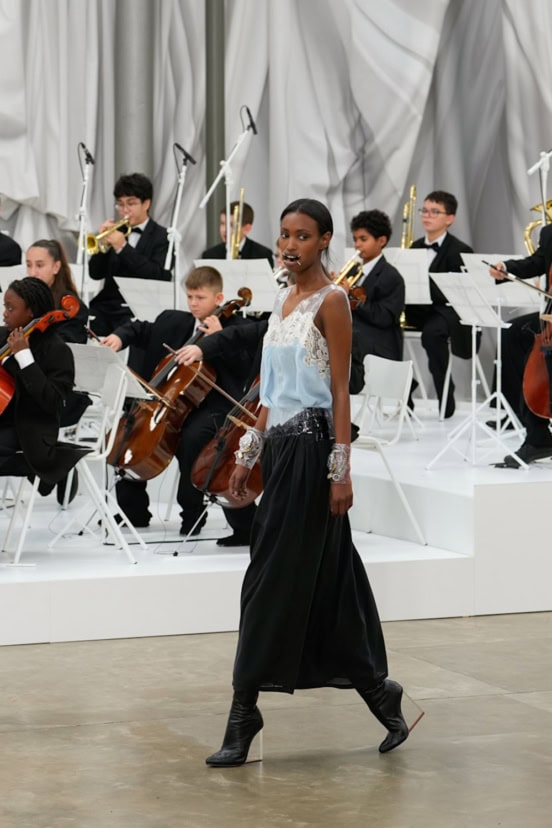When Spectacle Turns Inward
Review of Maison Margiela Spring 2026 Fashion Show
By Mackenzie Richard Zuckerman
THE COLLECTION
THE VIBE
Architectural Emotion & Measured Rebellion
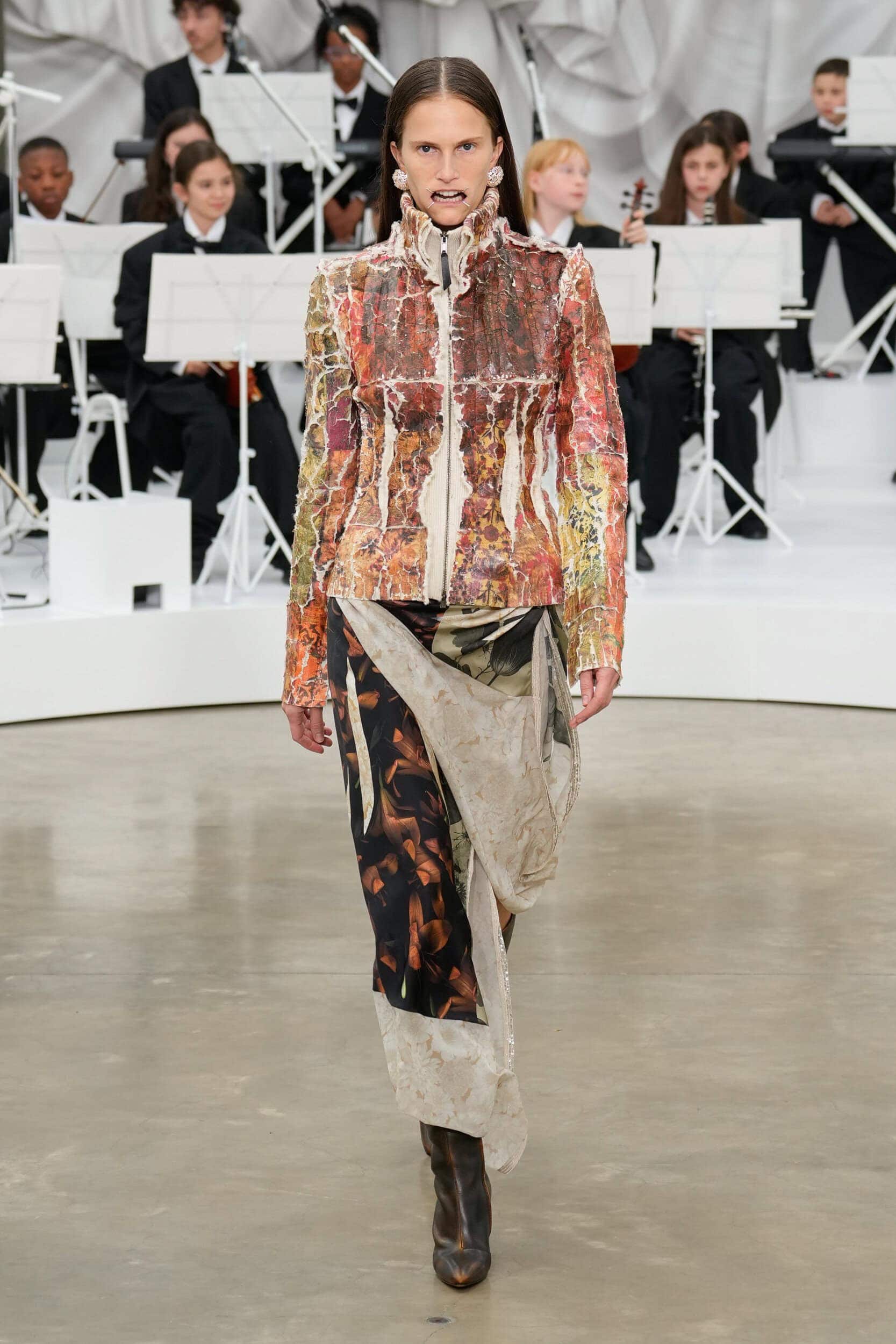
Few debuts carry the kind of inherited gravity that Glenn Martens faced stepping into Maison Margiela. The house’s DNA is rooted in intellectual rebellion—anonymity, deconstruction, and the poetry of imperfection—yet its recent history under John Galliano gave that ethos a new theatrical depth. Martens, a designer known for his structural audacity and irreverent wit, approached the task with unexpected composure.
This collection felt like a recalibration: an inward turn that favored architecture over theatre. Where Galliano expanded Margiela’s world through narrative and fantasy, Martens distilled it—transforming drama into discipline. Jackets appeared dissected and reassembled, seams traced in deliberate tension, sheer overlays glinting with a lacquered precision. Denim, cut with almost sculptural intent, spoke to the body rather than to the audience. Every gesture seemed to ask: what happens when you internalize spectacle—when the emotion lives in the construction itself?
The result was both intimate and cerebral, a conversation between reverence and renewal. Martens wasn’t reinventing the wheel so much as rediscovering its mechanics—revealing beauty through process, rather than performance.
This pared-back approach poses a vital question for the house: does Margiela, in this cultural moment, need spectacle—or subtlety? For a designer who’s long thrived on provocation and industrial-scale drama at Diesel, this felt like a measured evolution. We know Martens can command theatrics, which makes their absence here feel intentional, even charged. The drama hasn’t vanished—it’s migrated. Every frayed edge, every pinned seam, carries its own quiet intensity. In a landscape saturated with visual noise and maximalist storytelling, his restraint reads as confidence.
The show marked a step toward maturity—a designer once celebrated for youthful experimentation now showing the calm assurance of someone who no longer needs to shout. The focus shifts inward: to cut, proportion, and the subtle play of tension across the form. And yet, the house’s outsider spirit remains intact, expressed through an undercurrent of cool unease that keeps Margiela’s language alive and relevant.
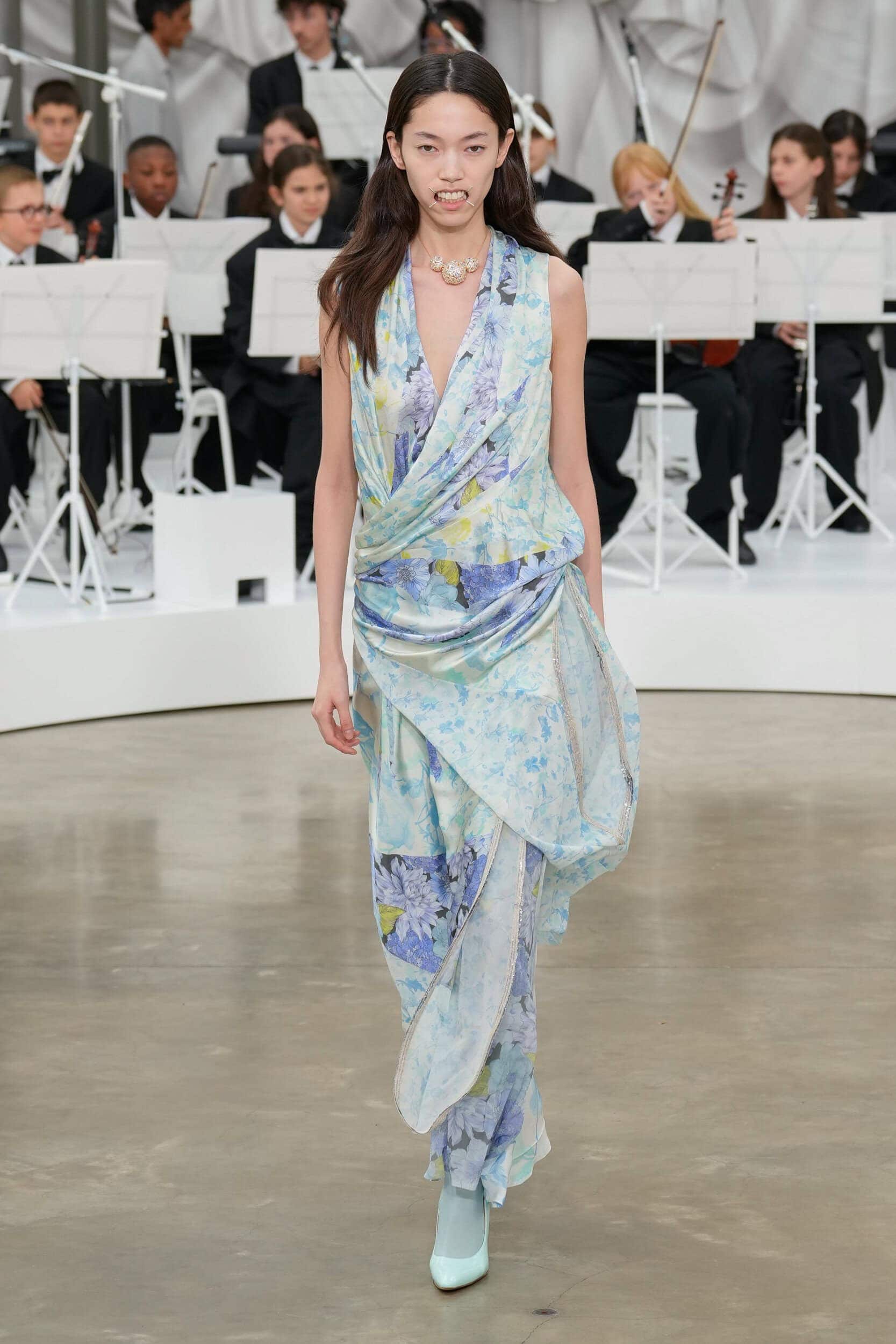
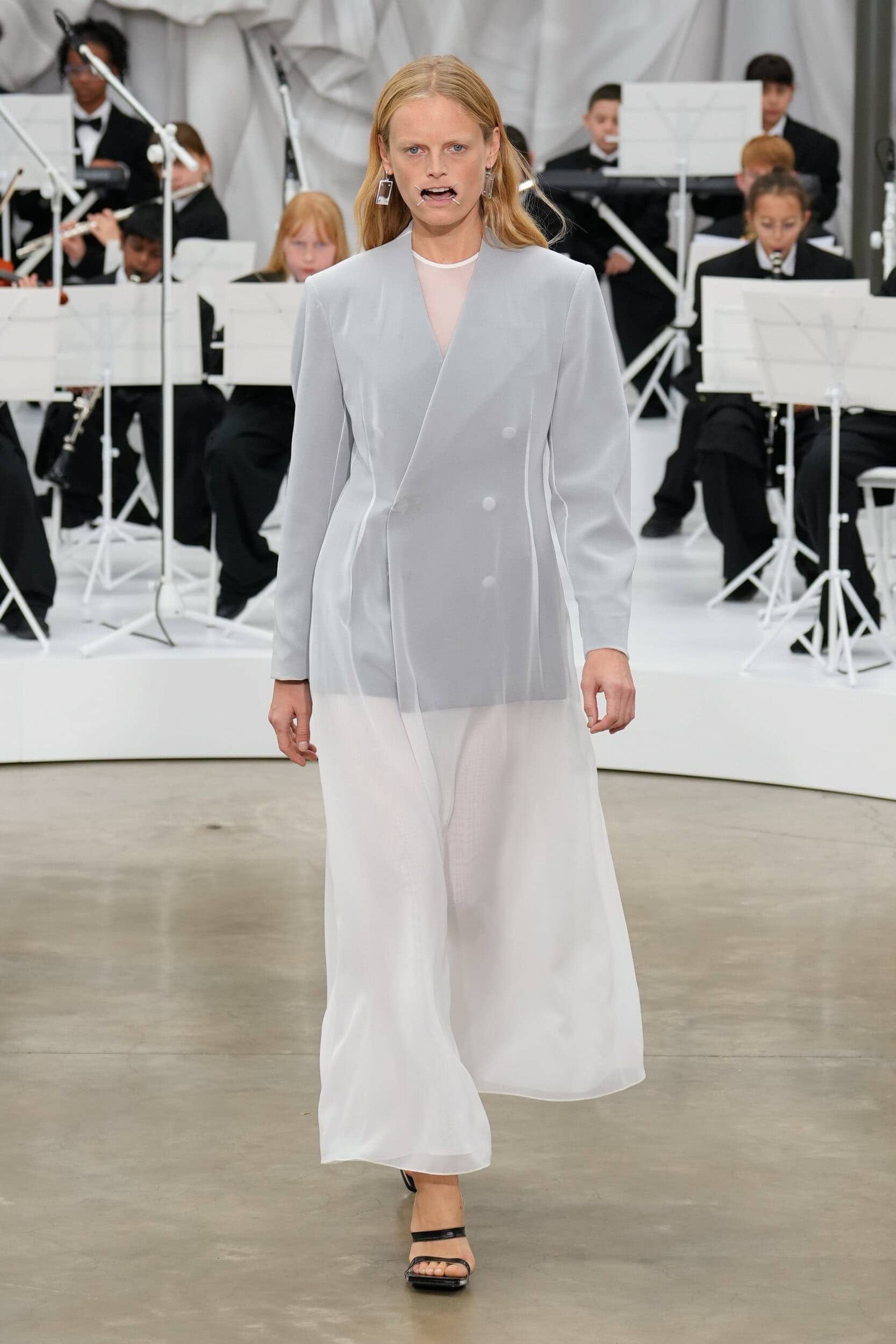
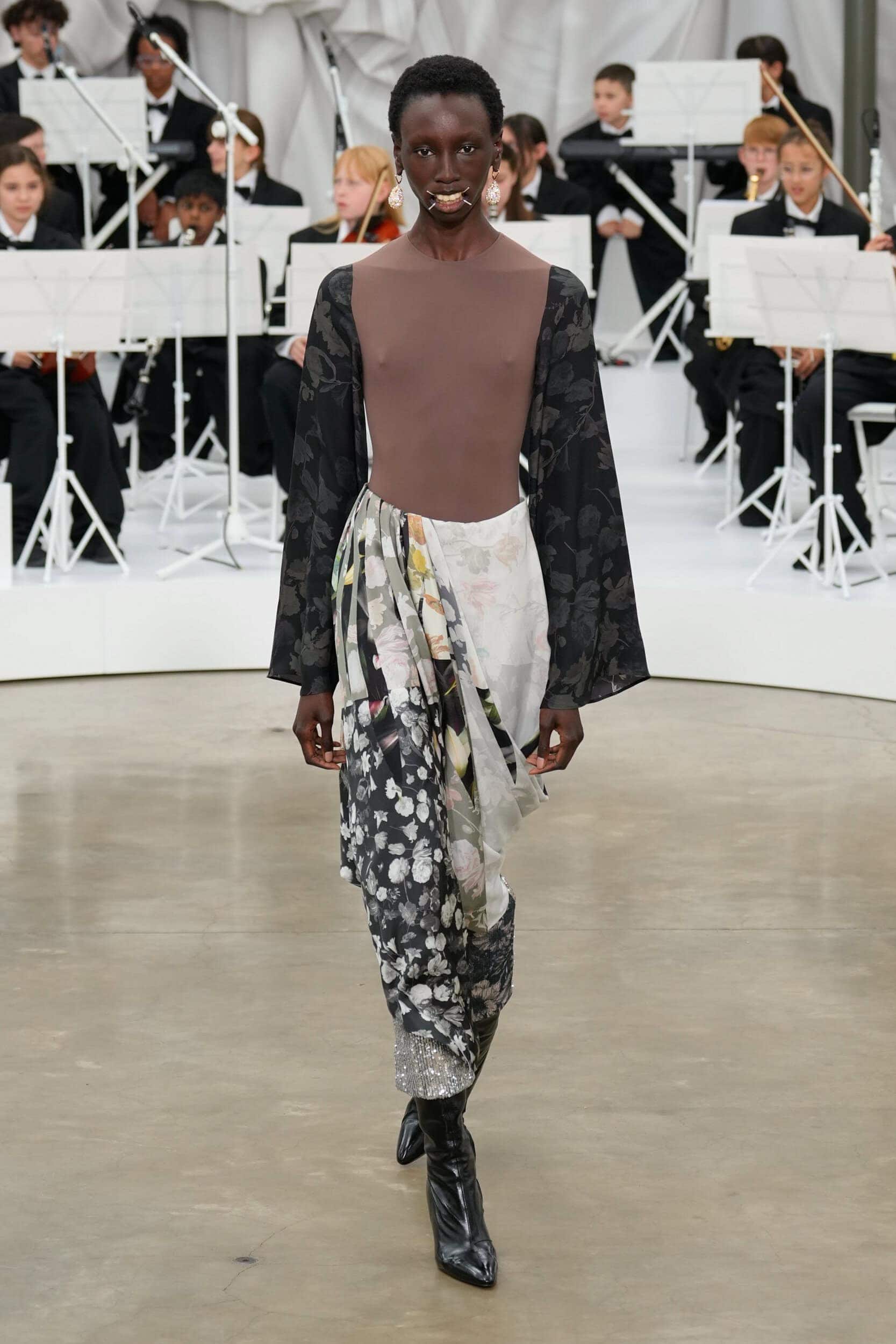
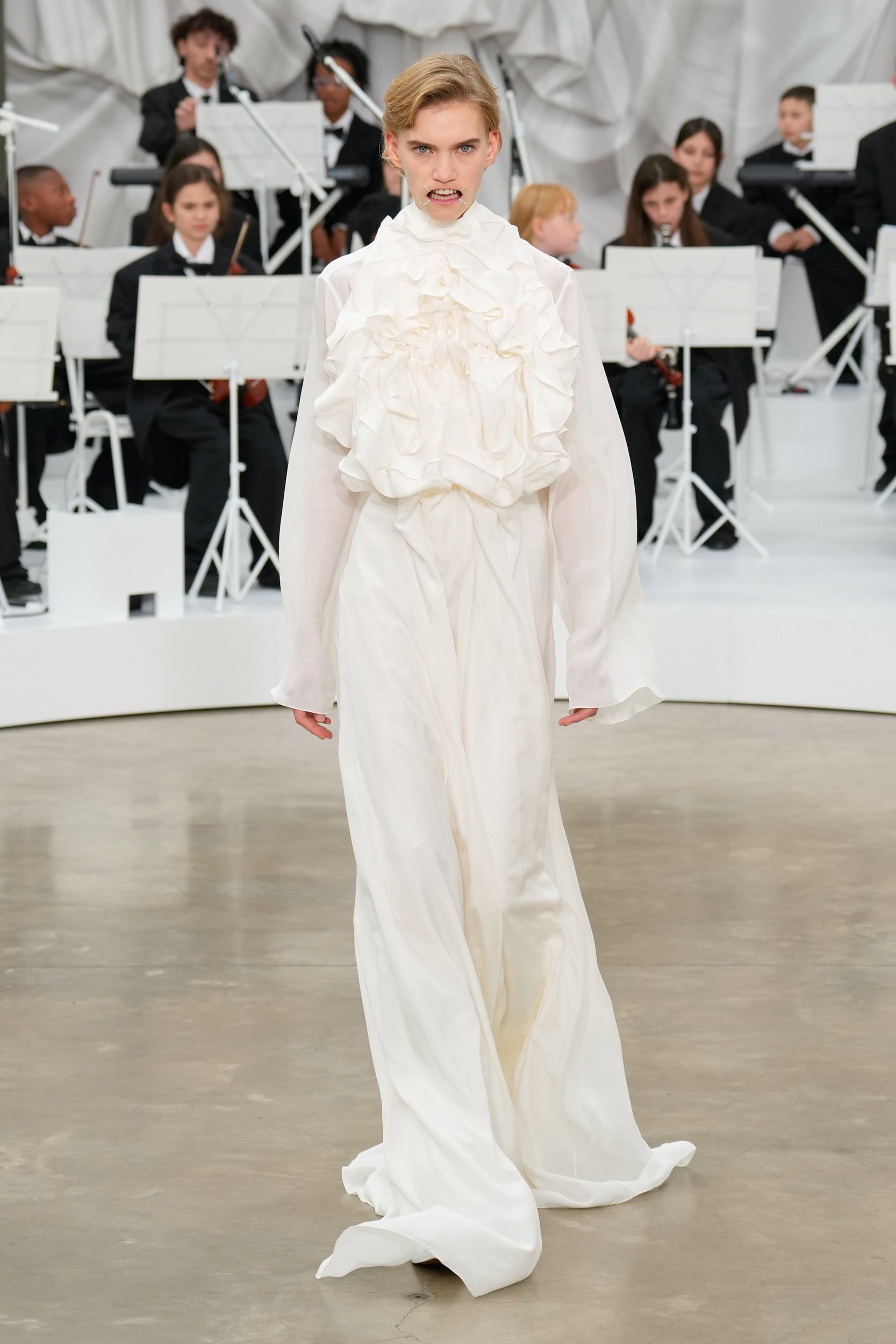
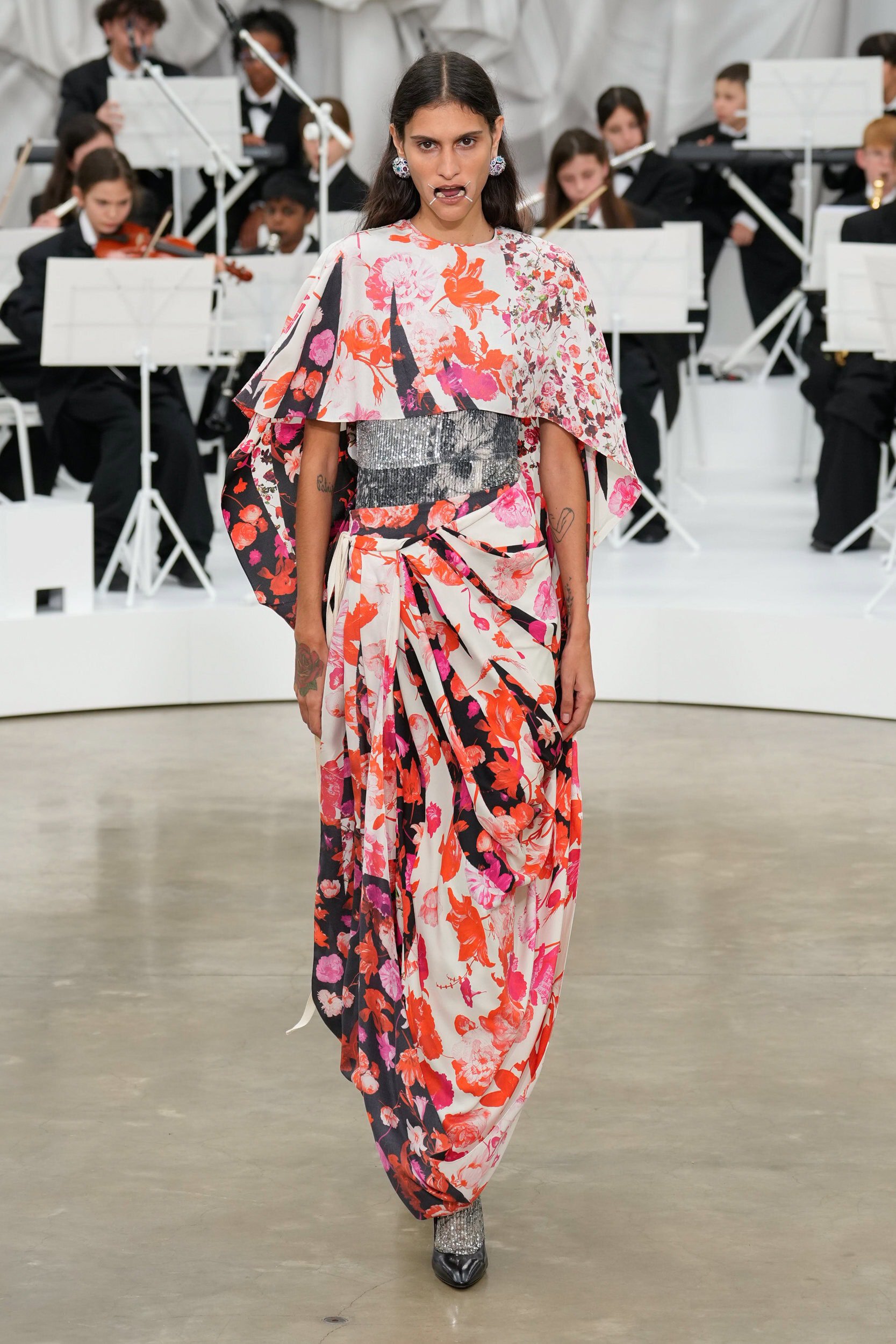
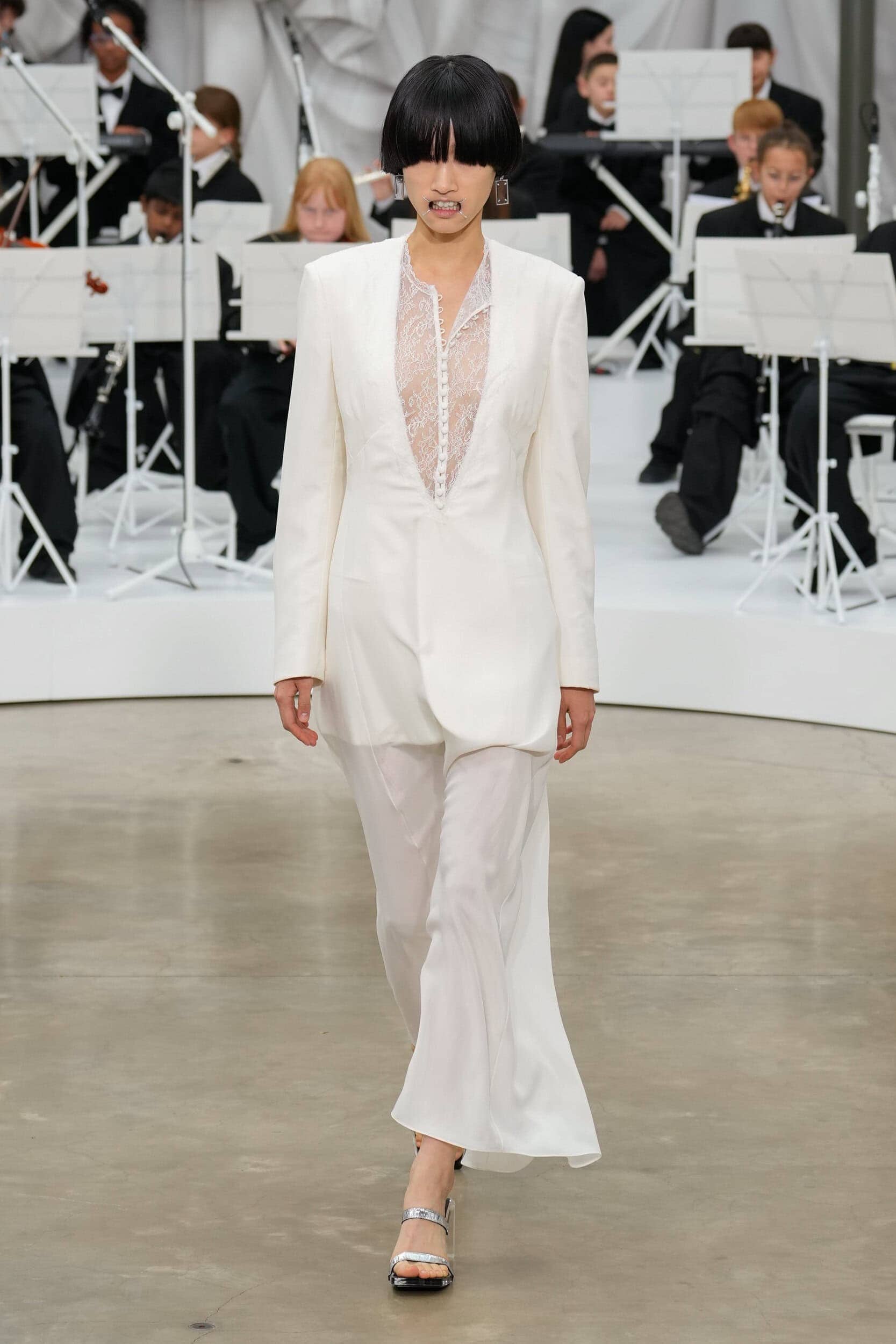
THE DIRECTION
THE WRAP UP
Martens’ debut made a clear statement about the future of Maison Margiela. It honored the house’s core—the belief that imperfection reveals truth—while reimagining how that truth might look today. Where Galliano explored transformation through emotion and performance, Martens finds it in structure and restraint. This was less about spectacle, more about substance; less a rupture, more a resonance.
If Galliano’s Margiela felt like a dreamscape, Martens’ feels like the moment of clarity that follows—lucid, self-aware, but still haunted by beauty. He’s taken the house’s codes—exposure, deconstruction, intellectual play—and rendered them tactile again, returning emotion to the stitch, the seam, the hand. The collection doesn’t just modernize Margiela; it reaffirms why the house still matters.
